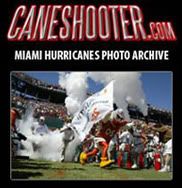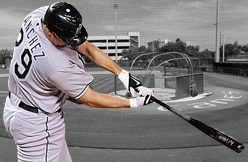Gaby Sanchez may not feel like he needs power to play first base, but he will need a good deal of offense. Via MLB.com:
A proven .300 hitter in the Minor Leagues, Sanchez doesn’t provide the power of a prototypical big league first baseman. He’s not going to approach the home run numbers of the Phillies’ Ryan Howard, for example. But what he lacks in terms of brute strength, he is capable of making up for with his overall hitting ability.
“I feel I have power, and I know that it’s there,” Sanchez said. “Early on, I’m not trying to work on it. I’m getting my swing into the game. I’m just trying to work on hitting it to the opposite field and up the middle. And once that gets better and better, later on, I’ll try to let the pitcher supply the power.”
Sanchez is right in that nowhere on the job resume of first base does it say “Must hit 20+ HR a season.” But the concern with Sanchez is not (or at least it should not) be that he doesn’t hit enough home runs, but rather that he doesn’t hit enough at all. It all hinges on positional scarcity.
Why first base is the “power position”
No one ever said first basemen have to be home run hitters necessarily, but that is how it is always viewed. When you see guys like Ryan Howard, Prince Fielder, and Albert Pujols at the position, you can’t help but think to yourself “Hey, our first baseman should be a power hitter like those guys!” But you’d be wrong, sort of.
Part of the reason why first base is so populated by these guys may indeed be a bias of major league managers that power hitters play first base. In this regard, it can be something of a self-fulfilling prophecy: managers intentionally move the heaviest, power-filled players to first base because that’s how it has always been. But part of it is that, as most fans in and out of sabermetrics can recognize, first base is the easiest position on the field to play. This information is not surprising. Anyone who has played in little league knows that there are two positions you get moved to if the coach knows you are a bad player: first base and right field (conveniently enough, I logged the most innings at those two spots). At first base, your primary concern is catching throws; less balls are hit to you than to any other part of the field, and you don’t have to worry about covering a whole lot of space.
What does this have to do with hitting? Nothing, really. With the possible exception of catcher (we just don’t know yet), no defensive position inherently affects hitting so that certain positions require better hitters. But defensive impact does affect the supply of players who can play the position. That is, because first base is easier to play than other positions, there are more players who can play first base. As a result, the supply of first baseman is high enough that it makes them less worthwhile to have than other players on the field.
That is where the positional adjustment used in WAR calculations comes into play. WAR docks first basemen 12.5 runs per 162 games in order to even out the pool of players available to play different positions. So the pool of players who can play +12.5-run defense at first base is the same (based on the research and a little tweaking) as the pool of players who can play -7.5 shortstop or -2.5 second base.
What about Sanchez?
This doesn’t mean that to be good, Sanchez needs to play that kind of defense at first. In fact, very rarely would you see players who could do that kind stuff at first base, due to the lack of opportunities at the position and the likelihood that that player would just move to another position like outfield or third base. But what it means is that to provide value to the Marlins, Sanchez has to overcome the fact that he is at the most replaceable of positions. That 12.5-run deficit that he starts with needs to be made up somehow, and usually first basemen do that on offense.
Assuming 162 games is approximately 700 PA. That 12.5-run difference is the difference between an average wOBA of .330 and a wOBA of .351. Here are some players in 2009 who achieved a similar wOBA.
Name: AVG/OBP/SLG/wOBA
Dan Uggla: .243/.354/.459/.354
Alberto Callaspo: .300/.356/.457/.352
Hunter Pence: .282/.346/.472/.351
Nate McLouth: .256/.352/.436/.350
Nick Markakis: .293/.347/.453/.349
Juan Rivera: .287/.332/.478/.348
All of those players run the gamut of skills, ranging from high average hitters with medium-range power like Callaspo and Markakis, to players in between like Pence, to power-patience types like Uggla and McLouth. Among those players, a few hit home runs in the 20’s-30’s, others fell short by various amounts. The key to recognize is that while home runs are not a requirement, offense is one.
What are Sanchez’ best chances? He could be more of Markakis-type hitter; Markakis’ career adjusted ISO is .169, which seems like it could be in line with what Sanchez could provide. Over Sanchez’ minor league career, he has shown good contact capability and decent walk rates, meaning he could rack up a decent OBP and bring value there. A .280/.360/.430 slash line isn’t completely out of the question, and the projection systems are guessing around .270/.350/.420 already for 2010. This is a good sign for the Marlins, and it may indeed mean that Sanchez has enough hitting prowess to stay at first base for the time being, even without the pop of a Howard- or Fielder-type hitter. With the Marlins awaiting the arrival of Logan Morrison, I think the team could live with production of that level from Sanchez.

(marlinsmaniac.com)



